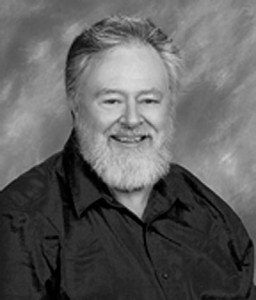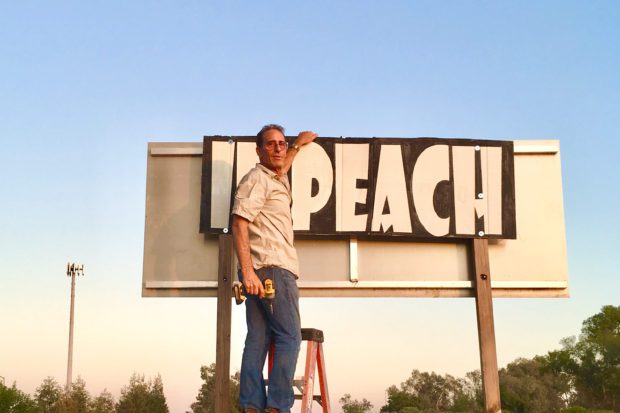
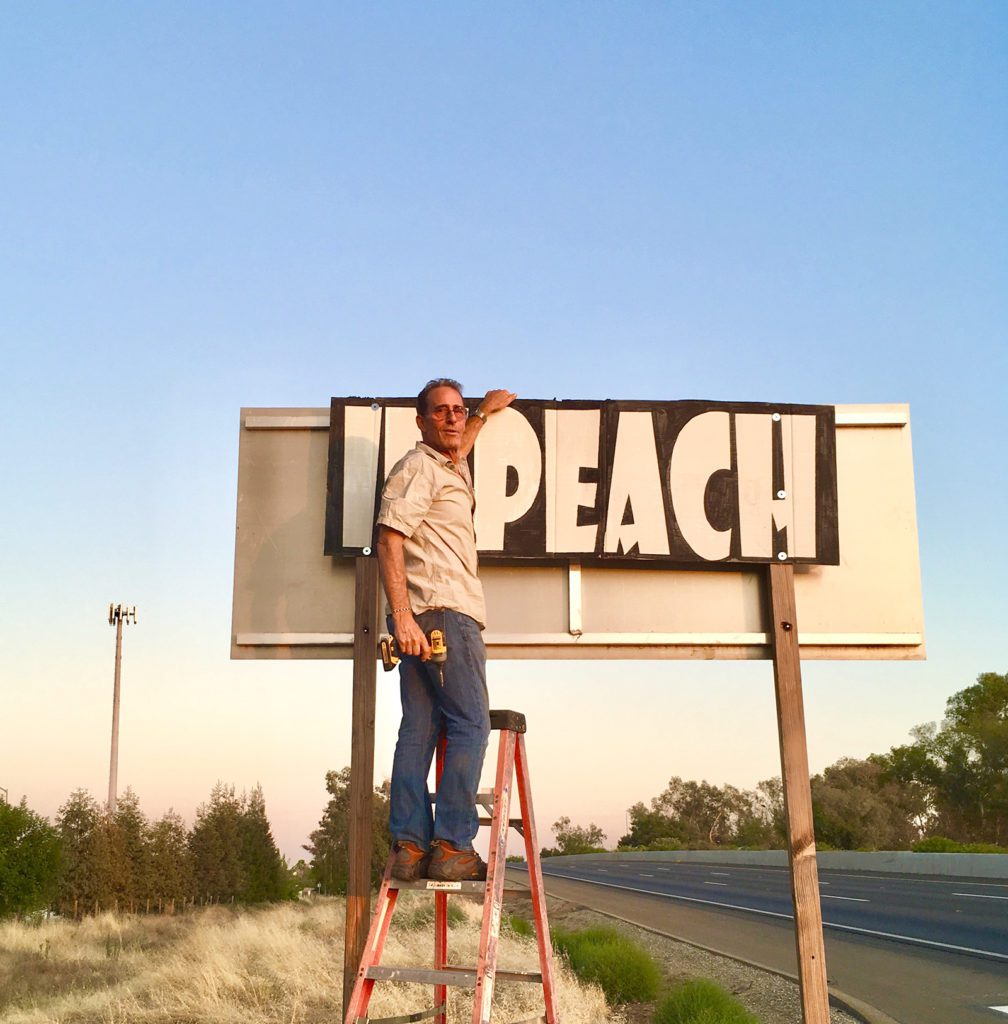
By David E. Roy
Chris Wippern, an amiable man, has realized that his truest calling is being a freeway protest sign creator. Part of his joy stems from realizing recently that he is an artist and protest signage is his medium.
He took his inspiration from the FreewayBlogger (www.freewayblogger.com), who adamantly advocates this method of exercising our First Amendment rights to get messages in front of thousands of viewers inexpensively. The FreewayBlogger repaid Wippern’s devotion to the cause and his developing skills in an Oct. 18, 2020, posting at the Daily Kos.
Wippern, though soft spoken, is passionate about what he’s doing and why he’s doing it. He believes that we can make a difference if more of us find ways to let others know our humane values and principles and voice our opposition to the horrible onslaught of inhumane attitudes and actions we face today.
He encourages others to follow suit with freeway signs, but if your talent lies elsewhere go there instead. For example, cellist Vedran Smailović in 1992 played Albinoni’s Adagio in G Minor in Sarajevo for 22 days in memory of 22 people killed there waiting for bread.
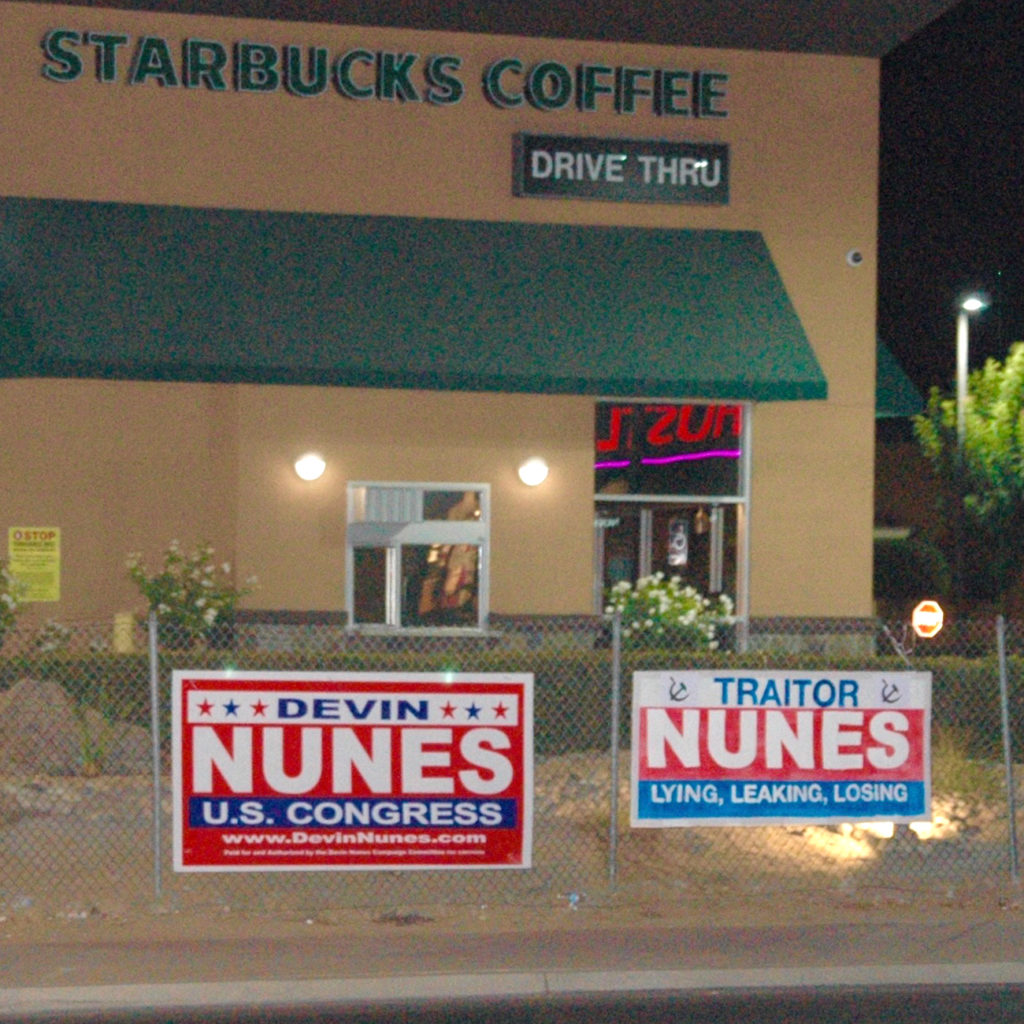
After some trial and error, Wippern has learned to make his signs by taking his design and projecting it onto scrap cardboard and then hand-drawing the outline. From there, he fills it in by painting the words, images and backgrounds.
It took some courage on his part to start placing his messages. After posting a sign, he needs to move back far enough to get a picture of the work. Once after finishing an installation, he had just gotten to an overpass to photograph the sign and he saw a couple suddenly stop. He thought he was going to have to watch this new sign be destroyed, but the couple started taking selfies with the sign behind them.
He’s gained more than 5,000 followers on Twitter who cheer him on. His motto: “Cardboard, Paint and the First Amendment.”

Wippern’s extensive and varied work experience and his family background undergirds his sign-making. As he puts it, he has done just about everything related to construction.
His family lineage includes a mix of the grounded and practical with the artistic. His parents had doctoral degrees, mom in the field of education with children with special needs and dad in the field of business and finance, which he taught at Yale. His father paired this with a love of performing in bands as a drummer. One of Wippern’s sons is also deeply involved in the fine arts.
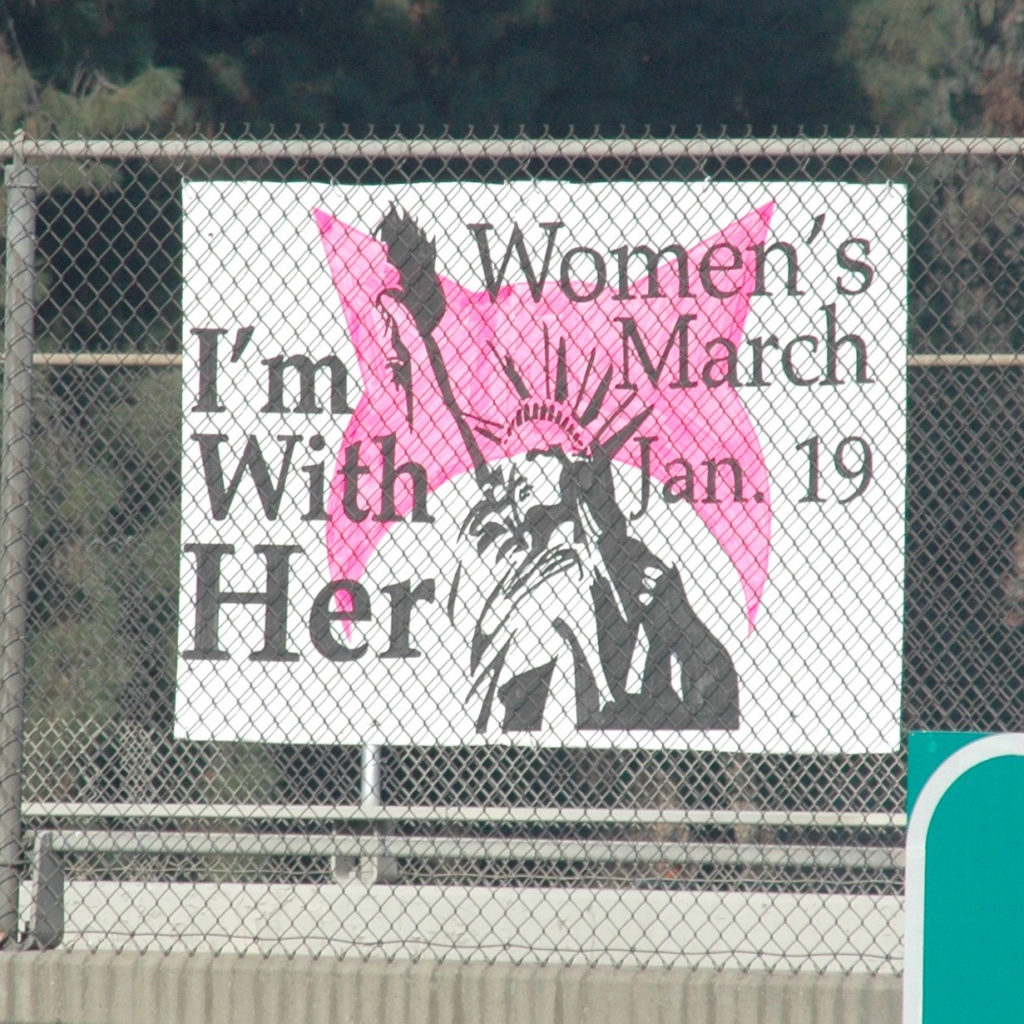
A haunting question when doing something quirky, different and out of the norm to protest is whether it could make a difference. There has been significant criticism that protesting on social media and other non-typical platforms has no impact.
An example of someone in this alternate forum whose successes have shown that criticism to be incorrect at least some of the time is Judd Legum, an investigative reporter who started an online newsletter, Popular Information. An independent study confirmed that his work motivated the company behind Olive Garden to start offering healthcare to all its workers after refusing this even during the pandemic.
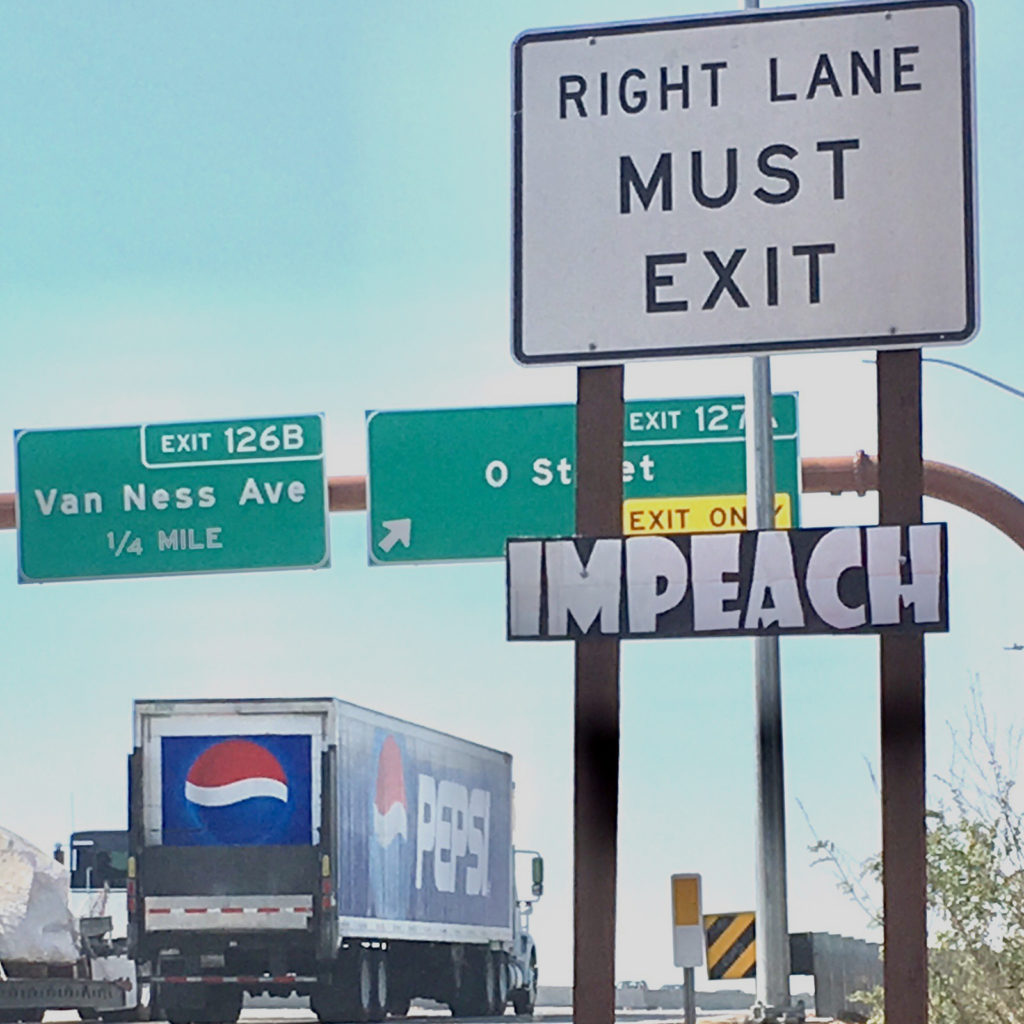
In addition, something that criticism ignores is the tremendous power that shame has to control our behavior; and that includes the tremendous efforts we often make to avoid anticipated shame. Social media in the broad sense is a prime delivery system for shame and for the countless efforts to be praiseworthy, idealized, and more.
Our efforts, expressed in many ways, can yield successful results. Wippern’s belief in his project gives him a sense of purpose. When we seek and act in harmony with the universe’s energy that aims for the well-being of all, we feel an internal uptick of positive energy.
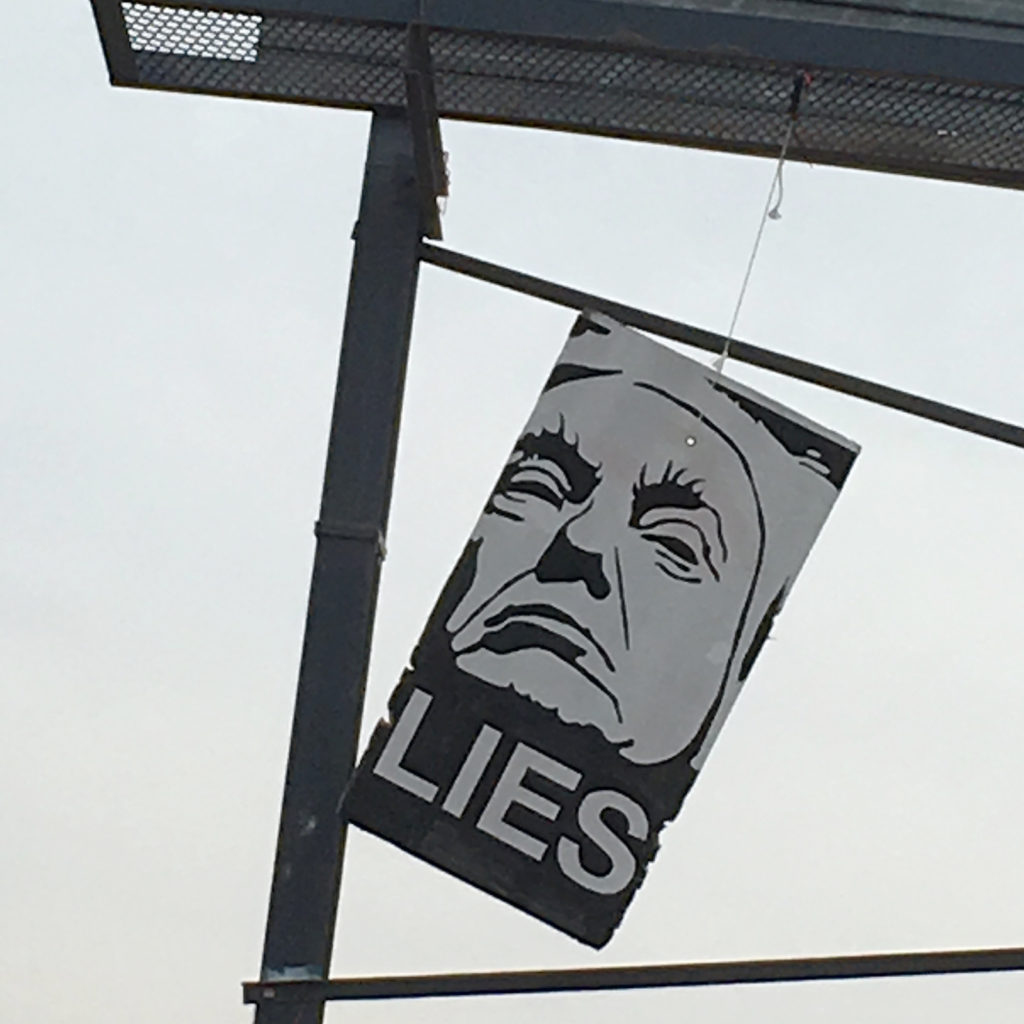
Wippern becomes more alive and more animated as he shares details of his venture. His art certainly goes right to the point. It is aesthetically pleasing, clever and definitely pointed.
What might be your calling?
All photos by the author.
*****
David E. Roy, a recently retired psychotherapist after 45 years, moved to Fresno in 1987. His Ph.D. combined psychotherapy, philosophy and theology. He’s worked as a journalist in Tucson, was on Fresno’s Human Relations Commission and was the first marriage and family therapist hired by Fresno County. He’s currently working on a coherent theory about the roots of our species’ current trend toward domination and violence. He oversees 12 rescued cats.

